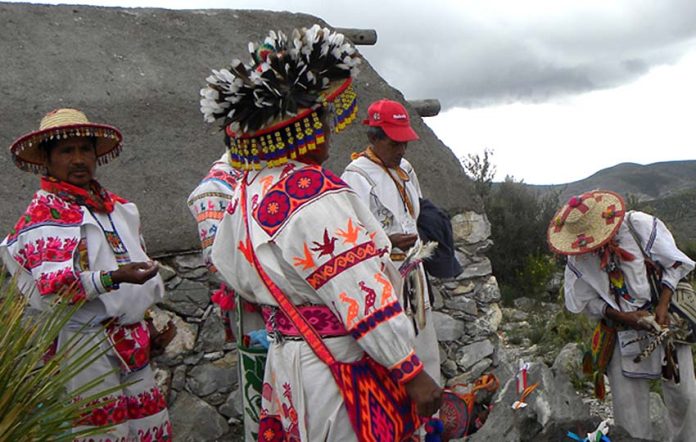The Wixárika — Huichol in Spanish — are the oldest surviving indigenous culture in Mexico who continue to practice their religious beliefs and traditions as their ancestors did centuries ago.
They live in the Sierra Madre Occidental in the central west of Mexico, mainly in the state of Nayarit, where they are a majority ethnic group.
The rugged mountainous terrain provides a natural barrier to acculturation, but their unique culture is now endangered by mining, peyote harvesters and peyote tourism.
Their religious beliefs, based on animism and shamanism, permeate every aspect of their lives: their artwork, rituals, dance, music and even their clothing. Three elements central to those beliefs are deer, maize and peyote.
The Wixárika are divided into five autonomous communities, each with their own religious authority called the mara’akate — a shaman priest — responsible for preserving and teaching their religious traditions.
I asked INAH archaeologist Gibrán de la Torre why the Wixàrika migrated to the Sierra Madre region of Mexico 500 years ago and where they came from.
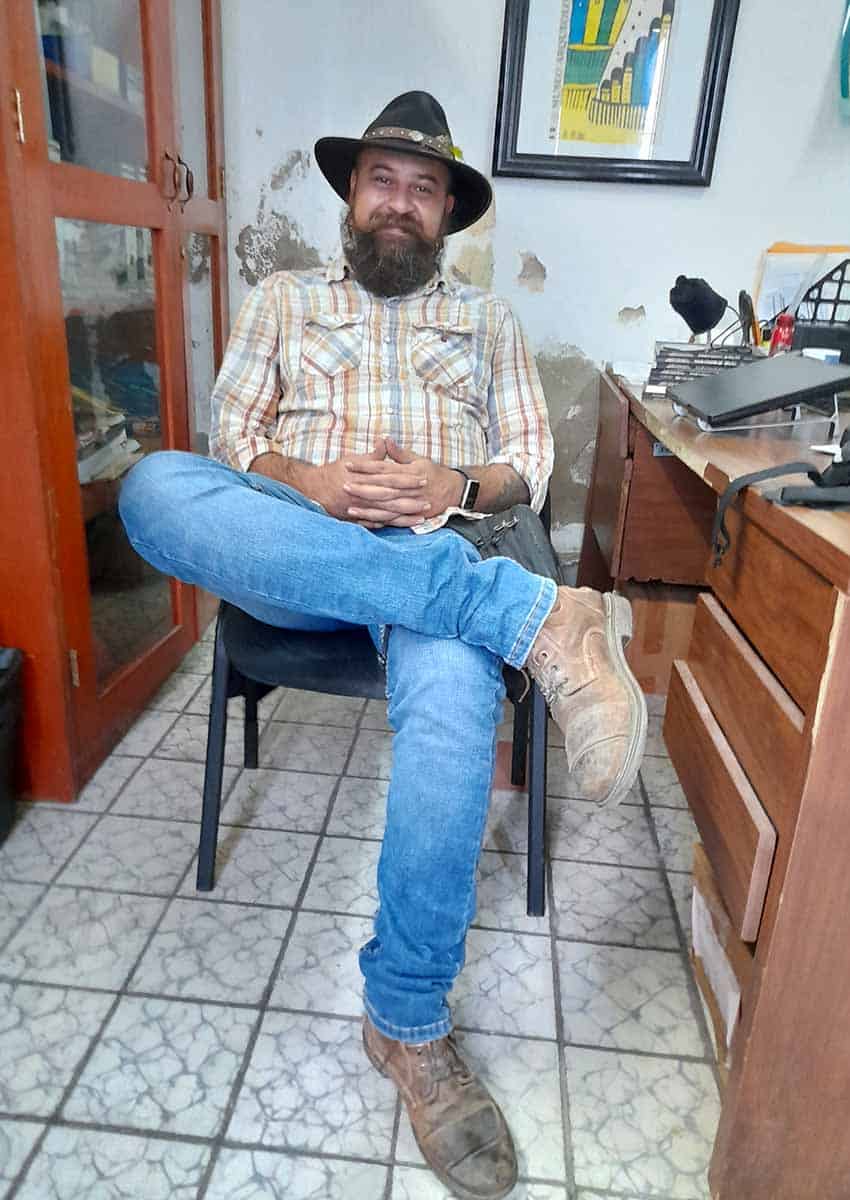
“We don’t know,” he told me. “We have found Wixárika artwork from A.D. 450 in Sinaloa. However, there are no Wixárika in Sinaloa today.”
The Wixárika’s highly valued artwork is created by pressing colorful threads or beads into wax. De la Torre said that “the traditional artwork always tells a story — stories of their ancestors, stories about their beliefs, stories about everyday life. The ‘commercialized’ artwork [of the younger generation] does not tell a story.”
He pulls up a picture of a beaded bowl on his computer.
“This was given to the [late 19th-century Norwegian explorer] Carl Lumholtz, who lived with the Wixárika for several years. It was created by a shaman priest and tells the story of Lumholtz’s dog, and longtime traveling companion, who had just died. It was given to Lumholtz to ease his pain and sorrow over the loss of his companion.”
Lumholtz’s book, Unknown Mexico, published in 1902, chronicles his five years among the indigenous tribes of the western Sierra Madre and is considered the anthropological and archaeological bible for understanding Wixárika’s history and traditions.
De la Torre then shows me several photos of traditional Wixárika artwork and points out the prominently displayed peyote plant in the mosaics.
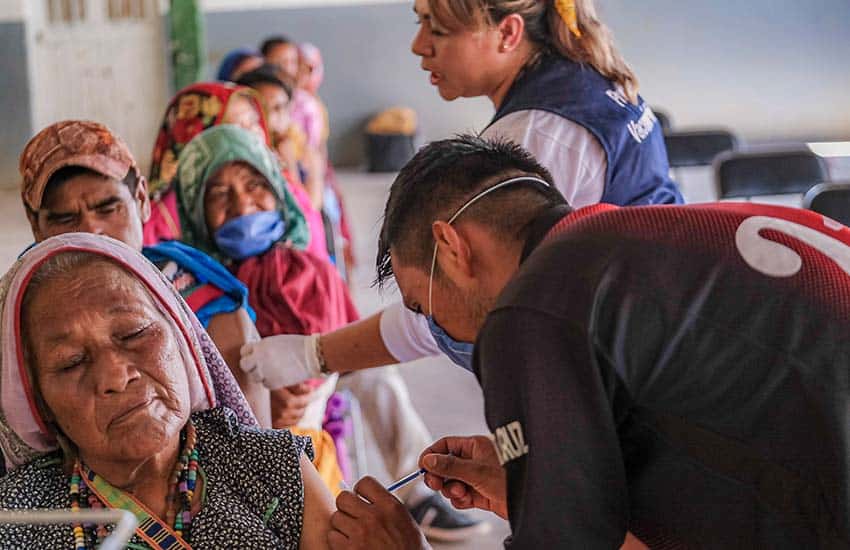
“The peyote is a very important sacred symbol. Most traditional artwork will contain the peyote, sometimes along with the deer and maize.”
The Wixárika believe that the Blue Deer god helps them find their way in life but that the deer only reveals himself when you can cross the narrow bridge between ordinary life and the world beyond. Consuming peyote, they say, will remove all fears and negative thoughts, allowing you to communicate with the gods. If you can do that, the deer will appear and transform your life.
Deer, maize and peyote are all connected in the Wixárika belief system. The maize cannot grow without deer blood; the deer cannot be sacrificed until after the peyote hunt.
The peyote hunt happens in Wirikuta — “where the sun is born” or “where the world originated” — located in the desert area of the Sierra de Catorce in San Luis Potosí, where the peyote grows. This is also the site of their religious ceremonial center.
The hunt, made twice a year and led by a shaman, is a 400-km trek for the Wixárika, following the same sacred path as their ancestors. Along the way, they stop at sacred rivers, streams and caves, where the shaman ingests peyote and makes offerings to the gods.
Upon reaching Wirikuta, the traditional sacred ceremony begins. When a peyote cactus is found, the pilgrims ritually throw spears at it — the heart of the deer god.
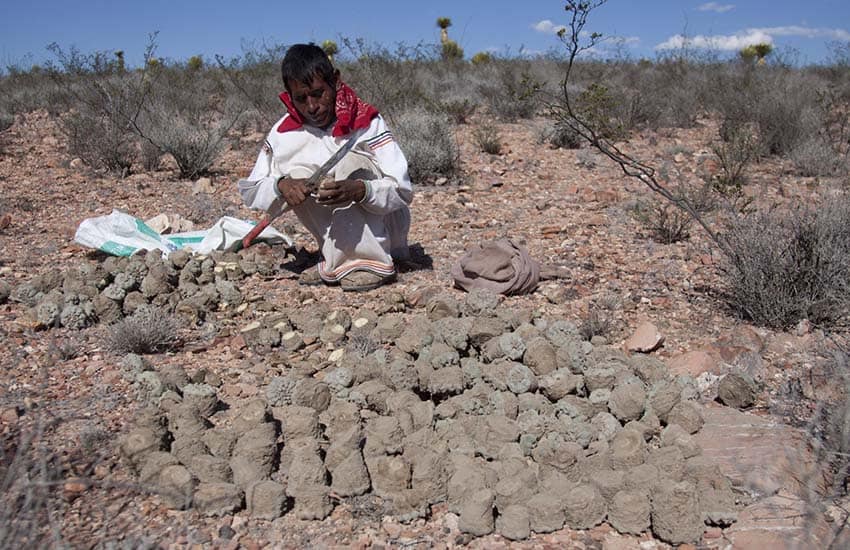
The peyote is shared with the pilgrims, and the mitote — a shared vision — begins, sometimes while dancing in a circle. Additional peyote is then gathered to take back to their communities for other rituals.
Unfortunately, in the last 30 years, Wirikuta, and the peyote, has become endangered: in 2010, Canadian mining company First Majestic Silver acquired rights to reopen a colonial-era silver mine in the Sierra de Catorce. National and international NGOs, prominent Mexicans, environmental and indigenous rights groups have joined with the Wixárika in opposing the mine’s reopening.
Although Wirikuta is located within a natural protected area (ANP), the Wixárika’s appeals to the Mexican government to protect this sacred land were to no avail. The mining project is currently paused, awaiting environmental impact studies.
De la Torre doesn’t believe there is much that can be done to protect the sacred site.
“This is not their [the Wixárika’s] land. They don’t even live on the land. They have no protections under the law.”
Mining is not the only threat.

Peyote harvesters make a living, though illegal, by harvesting and selling it. De la Torre says, “Some have begun drying the peyote plant, grinding it up and selling it as mescaline. They harvest large quantities of peyote, depleting the crop.”
In the 1970s, the writer Carlos Castaneda — then a student at the University of California in Los Angeles — popularized peyote, and since then, “peyote tourists” have been coming to San Luis Potosí in increasing numbers searching for their own recreational mystic journey.
The Wixárika are careful to rebury the roots and place offerings on top so that the peyote will regenerate, but outsiders don’t know how to properly harvest it, and they destroy the cactus’ roots, meaning the peyote won’t grow back.
Under the best of circumstances, it takes 10 to 15 years for the plant to rebound after being harvested.
“The peyote is disappearing,” de la Torre says. “The Wixárika must walk further and further to find the plants.”
The only legal protection the Wixárika have is the right to consume peyote as part of their religious ceremonies.
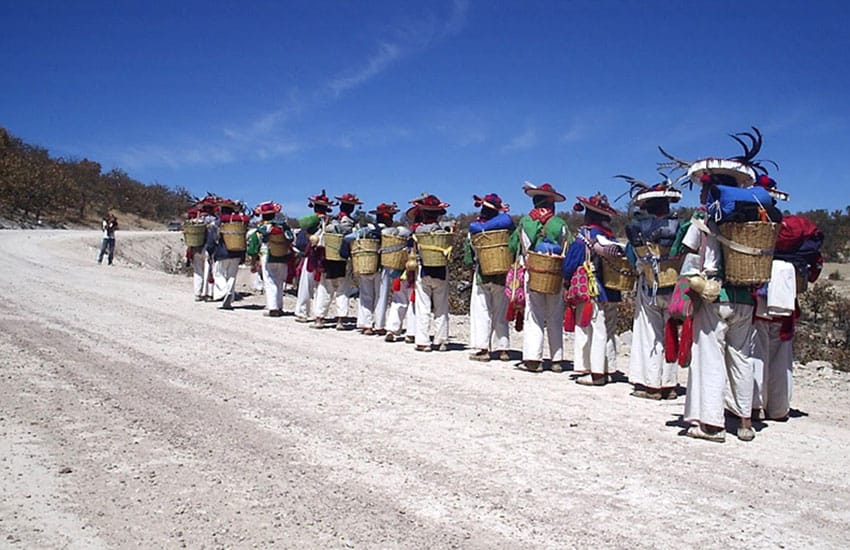
I asked him whether anything can be done.
“I don’t think so. If the peyote disappears, their culture disappears. We have hundreds, maybe thousands of cultures in Mexico that have disappeared,” he said.
“The world is changing around these tribes. They either transform their culture, or their culture will die.”
Sheryl Losser is a former public relations executive and professional researcher. She spent 45 years in national politics in the United States. She moved to Mazatlán in 2021 and works part-time doing freelance research and writing.
